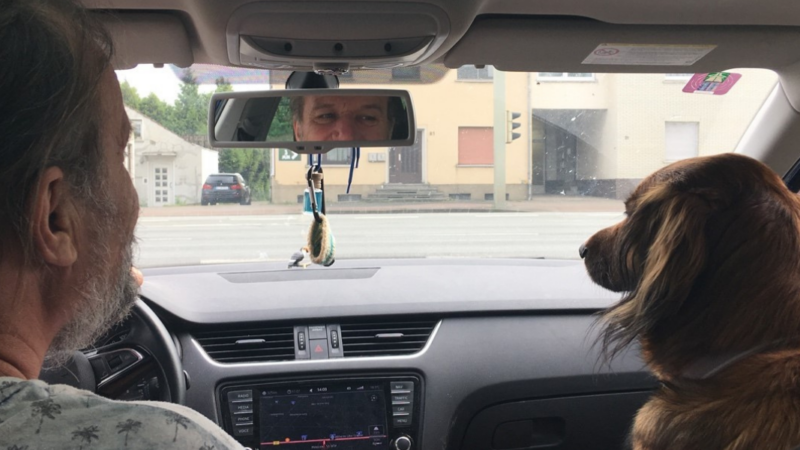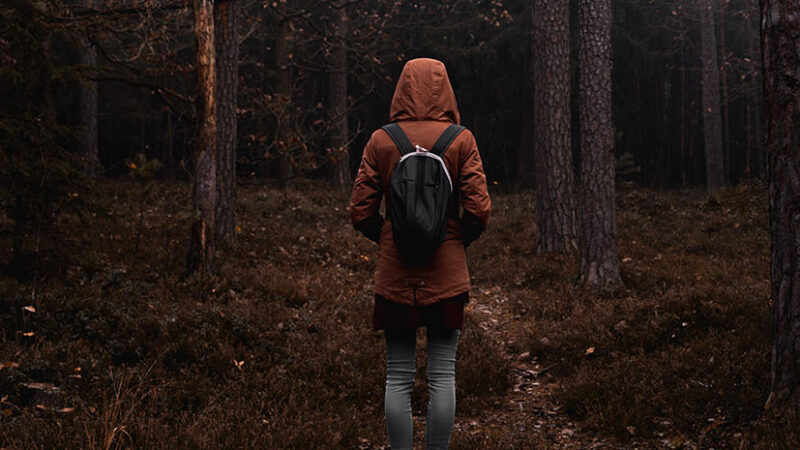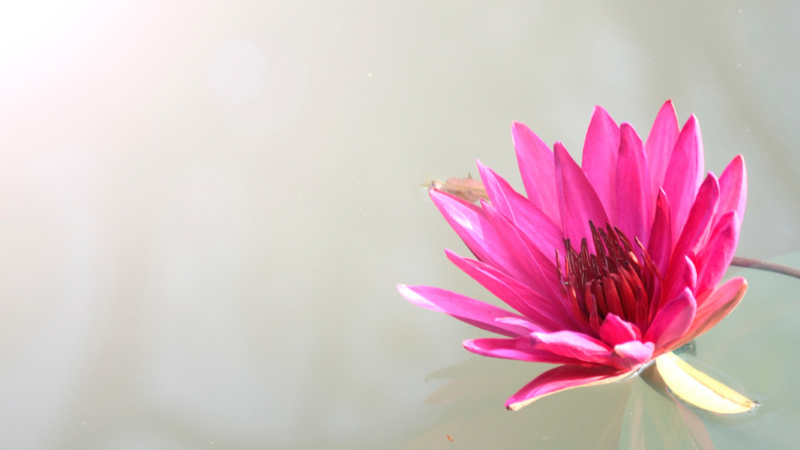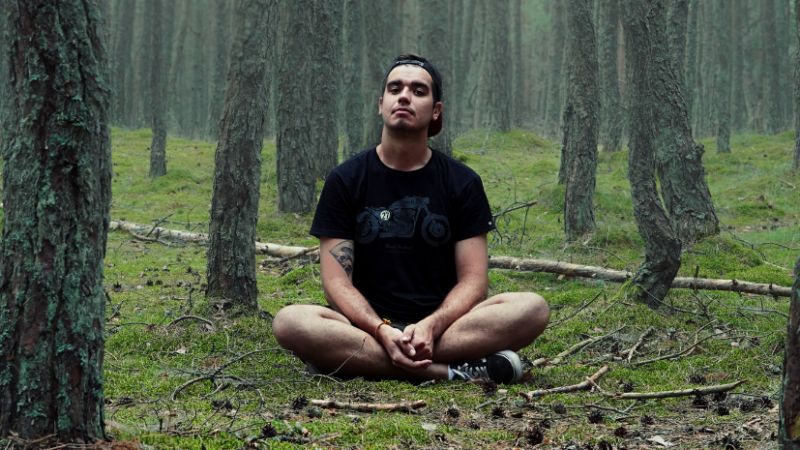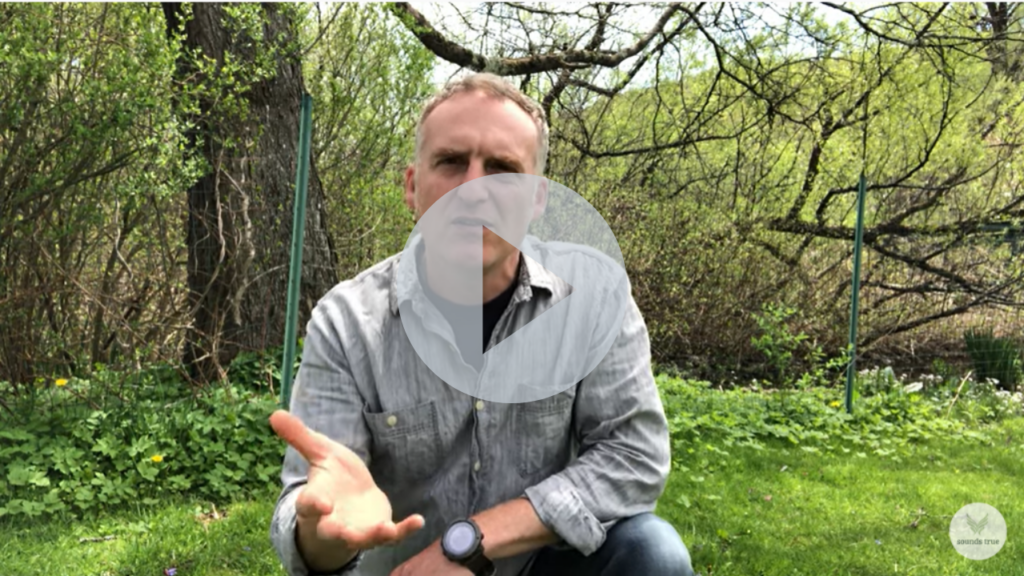Waking Up to Your World, by Pema Chödrön
Enjoy this inspiring article and vision from our dear friend Pema Chödrön, courtesy of our friends at Shambhala Sun. Here, Pema points to the alive nature of the sacred world, which can be found in the midst of the everyday, unfolding out of the center of your very own heart.
Throughout our day we can pause, take a break from our usual thoughts, and wake up to the magic and vastness of the world around us. Pema Chödrön says this easy and spacious type of mindfulness practice is the most important thing we can do with our lives.
Waking Up to Your World, by Pema Chödrön
One of my favorite subjects of contemplation is this question: “Since death is certain, but the time of death is uncertain, what is the most important thing?” You know you will die, but you really don’t know how long you have to wake up from the cocoon of your habitual patterns. You don’t know how much time you have left to fulfill the potential of your precious human birth. Given this, what is the most important thing?
Every day of your life, every morning of your life, you could ask yourself, “As I go into this day, what is the most important thing? What is the best use of this day?” At my age, it’s kind of scary when I go to bed at night and I look back at the day, and it seems like it passed in the snap of a finger. That was a whole day? What did I do with it? Did I move any closer to being more compassionate, loving, and caring—to being fully awake? Is my mind more open? What did I actually do? I feel how little time there is and how important it is how we spend our time.
What is the best use of each day of our lives? In one very short day, each of us could become more sane, more compassionate, more tender, more in touch with the dream-like quality of reality. Or we could bury all these qualities more deeply and get more in touch with solid mind, retreating more into our own cocoon.
Every time a habitual pattern gets strong, every time we feel caught up or on automatic pilot, we could see it as an opportunity to burn up negative karma. Rather than as a problem, we could see it as our karma ripening, which gives us an opportunity to burn up karma, or at least weaken our karmic propensities. But that’s hard to do. When we realize that we are hooked, that we’re on automatic pilot, what do we do next? That is a central question for the practitioner.
One of the most effective means for working with that moment when we see the gathering storm of our habitual tendencies is the practice of pausing, or creating a gap. We can stop and take three conscious breaths, and the world has a chance to open up to us in that gap. We can allow space into our state of mind.
Before I talk more about consciously pausing or creating a gap, it might be helpful to appreciate the gap that already exists in our environment. Awakened mind exists in our surroundings—in the air and the wind, in the sea, in the land, in the animals—but how often are we actually touching in with it? Are we poking our heads out of our cocoons long enough to actually taste it, experience it, let it shift something in us, let it penetrate our conventional way of looking at things?
If you take some time to formally practice meditation, perhaps in the early morning, there is a lot of silence and space. Meditation practice itself is a way to create gaps. Every time you realize you are thinking and you let your thoughts go, you are creating a gap. Every time the breath goes out, you are creating a gap. You may not always experience it that way, but the basic meditation instruction is designed to be full of gaps. If you don’t fill up your practice time with your discursive mind, with your worrying and obsessing and all that kind of thing, you have time to experience the blessing of your surroundings. You can just sit there quietly. Then maybe silence will dawn on you, and the sacredness of the space will penetrate.
Or maybe not. Maybe you are already caught up in the work you have to do that day, the projects you haven’t finished from the day before. Maybe you worry about something that has to be done, or hasn’t been done, or a letter that you just received. Maybe you are caught up in busy mind, caught up in hesitation or fear, depression or discouragement. In other words, you’ve gone into your cocoon.
For all of us, the experience of our entanglement differs from day to day. Nevertheless, if you connect with the blessings of your surroundings—the stillness, the magic, and the power—maybe that feeling can stay with you and you can go into your day with it. Whatever it is you are doing, the magic, the sacredness, the expansiveness, the stillness, stays with you. When you are in touch with that larger environment, it can cut through your cocoon mentality.
On the other hand, I know from personal experience how strong the habitual mind is. The discursive mind, the busy, worried, caught-up, spaced-out mind, is powerful. That’s all the more reason to do the most important thing—to realize what a strong opportunity every day is, and how easy it is to waste it. If you don’t allow your mind to open and to connect with where you are, with the immediacy of your experience, you could easily become completely submerged. You could be completely caught up and distracted by the details of your life, from the moment you get up in the morning until you fall asleep at night.
You get so caught up in the content of your life, the minutiae that make up a day, so self-absorbed in the big project you have to do, that the blessings, the magic, the stillness, and the vastness escape you. You never emerge from your cocoon, except for when there’s a noise that’s so loud you can’t help but notice it, or something shocks you, or captures your eye. Then for a moment you stick your head out and realize, Wow! Look at that sky! Look at that squirrel! Look at that person!
The great fourteenth-century Tibetan teacher Longchenpa talked about our useless and meaningless focus on the details, getting so caught up we don’t see what is in front of our nose. He said that this useless focus extends moment by moment into a continuum, and days, months, and even whole lives go by. Do you spend your whole time just thinking about things, distracting yourself with your own mind, completely lost in thought? I know this habit so well myself. It is the human predicament. It is what the Buddha recognized and what all the living teachers since then have recognized. This is what we are up against.
“Yes, but…,” we say. Yes, but I have a job to do, there is a deadline, there is an endless amount of e-mail I have to deal with, I have cooking and cleaning and errands. How are we supposed to juggle all that we have to do in a day, in a week, in a month, without missing our precious opportunity to experience who we really are? Not only do we have a precious human life, but that precious human life is made up of precious human days, and those precious human days are made up of precious human moments. How we spend them is really important. Yes, we do have jobs to do; we don’t just sit around meditating all day, even at a retreat center. We have the real nitty-gritty of relationships—how we live together, how we rub up against each other. Going off by ourselves, getting away from the people we think are distracting us, won’t solve everything. Part of our karma, part of our dilemma, is learning to work with the feelings that relationships bring up. They provide opportunities to do the most important thing too.
If you have spent the morning lost in thought worrying about what you have to do in the afternoon, already working on it in every little gap you can find, you have wasted a lot of opportunities, and it’s not even lunchtime yet. But if the morning has been characterized by at least some spaciousness, some openness in your mind and heart, some gap in your usual way of getting caught up, sooner or later that is going to start to permeate the rest of your day.
If you haven’t become accustomed to the experience of openness, if you haven’t got any taste of it, then there is no way the afternoon is going to be influenced by it. On the other hand, if you’ve given openness a chance, it doesn’t matter whether you are meditating, working at the computer, or fixing a meal, the magic will be there for you, permeating your life.
As I said, our habits are strong, so a certain discipline is required to step outside our cocoon and receive the magic of our surroundings. The pause practice—the practice of taking three conscious breaths at any moment when we notice that we are stuck—is a simple but powerful practice that each of us can do at any given moment.
Pause practice can transform each day of your life. It creates an open doorway to the sacredness of the place in which you find yourself. The vastness, stillness, and magic of the place will dawn upon you, if you let your mind relax and drop for just a few breaths the storyline you are working so hard to maintain. If you pause just long enough, you can reconnect with exactly where you are, with the immediacy of your experience.
When you are waking up in the morning and you aren’t even out of bed yet, even if you are running late, you could just look out and drop the storyline and take three conscious breaths. Just be where you are! When you are washing up, or making your coffee or tea, or brushing your teeth, just create a gap in your discursive mind. Take three conscious breaths. Just pause. Let it be a contrast to being all caught up. Let it be like popping a bubble. Let it be just a moment in time, and then go on.
You are on your way to whatever you need to do for the day. Maybe you are in your car, or on the bus, or standing in line. But you can still create that gap by taking three conscious breaths and being right there with the immediacy of your experience, right there with whatever you are seeing, with whatever you are doing, with whatever you are feeling.
Another powerful way to do pause practice is simply to listen for a moment. Instead of sight being the predominant sense perception, let sound, hearing, be the predominant sense perception. It’s a very powerful way to cut through our conventional way of looking at the world. In any moment, you can just stop and listen intently. It doesn’t matter what particular sound you hear; you simply create a gap by listening intently.
In any moment you could just listen. In any moment, you could put your full attention on the immediacy of your experience. You could look at your hand resting on your leg, or feel your bottom sitting on the cushion or on the chair. You could just be here. Instead of being not here, instead of being absorbed in thinking, planning, and worrying, instead of being caught up in the cocoon, cut off from your sense perceptions, cut off from the power and magic of the moment, you could be here. When you go out for a walk, pause frequently—stop and listen. Stop and take three conscious breaths. How precisely you create the gap doesn’t really matter. Just find a way to punctuate your life with these thought-free moments. They don’t have to be thought-free minutes even, they can be no more than one breath, one second. Punctuate, create gaps. As soon as you do, you realize how big the sky is, how big your mind is.
When you are working, it’s so easy to become consumed, particularly by computers. They have a way of hypnotizing you, but you could have a timer on your computer that reminds you to create a gap. No matter how engrossing your work is, no matter how much it is sweeping you up, just keep pausing, keep allowing for a gap. When you get hooked by your habit patterns, don’t see it as a big problem; allow for a gap.
When you are completely wound up about something and you pause, your natural intelligence clicks in and you have a sense of the right thing to do. This is part of the magic: our own natural intelligence is always there to inform us, as long as we allow a gap. As long as we are on automatic pilot, dictated to by our minds and our emotions, there is no intelligence. It is a rat race. Whether we are at a retreat center or on Wall Street, it becomes the busiest, most entangled place in the world.
Pause, connect with the immediacy of your experience, connect with the blessings; liberate yourself from the cocoon of self-involvement, talking to yourself all of the time, completely obsessing. Allow a gap, gap, gap. Just do it over and over and over; allow yourself the space to realize where you are. Realize how big your mind is; realize how big the space is, that it has never gone away, but that you have been ignoring it.
Find a way to slow down. Find a way to relax. Find a way to relax your mind and do it often, very, very often, throughout the day continuously, not just when you are hooked but all the time. At its root, being caught up in discursive thought, continually self-involved with discursive plans, worries, and so forth, is attachment to ourselves. It is the surface manifestation of ego-clinging.
So, what is the most important thing to do with each day? With each morning, each afternoon, each evening? It is to leave a gap. It doesn’t matter whether you are practicing meditation or working, there is an underlying continuity. These gaps, these punctuations, are like poking holes in the clouds, poking holes in the cocoon. And these gaps can extend so that they can permeate your entire life, so that the continuity is no longer the continuity of discursive thought but rather one continual gap.
But before we get carried away by the idea of continual gap, let’s be realistic about where we actually are. We must first remind ourselves what the most important thing is. Then we have to learn how to balance that with the fact that we have jobs to do, which can cause us to become submerged in the details of our lives and caught in the cocoon of our patterns all day long. So find ways to create the gap frequently, often, continuously. In that way, you allow yourself the space to connect with the sky and the ocean and the birds and the land and with the blessing of the sacred world. Give yourself the chance to come out of your cocoon.
This teaching is based on a talk given to the monks and nuns at Gampo Abbey in Cape Breton, Nova Scotia, where Pema Chödrön is resident acharya (senior teacher). It has been adapted for a lay audience.

Meet the Author of The Wim Hof Method
The Author
Wim Hof, a.k.a. “The Iceman,” holds multiple world records for his feats of endurance and exposure to cold—such as climbing Mount Kilimanjaro wearing only shorts and shoes, running a barefoot half-marathon in the Arctic Circle, and standing in an ice-filled container for more than 112 minutes. The benefits of his method, now practiced by millions, have been validated by eight university research studies. For more, visit wimhofmethod.com.
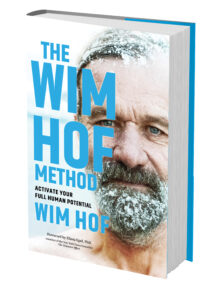 The Book
The Book
Wim Hof shares the life-changing technique that anyone can use to supercharge their capacity for strength, health, and happiness. Join this trailblazing teacher for in-depth instruction on the three pillars of his method (Cold, Breath, and Mindset), the science supporting his techniques, his incredible personal story, and much more.
Show us a day in your life.
Every day is a challenge to do more, as in mindset. My mindset always has been going for the full, everything you got.

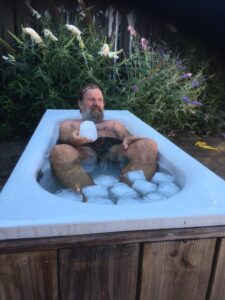 Strong exercising, breathing, postures, power, and ice water.
Strong exercising, breathing, postures, power, and ice water.
I feel everyday gratitude for what has been achieved, which is helping many, many people. My soul knows: you give it all, you get it all.
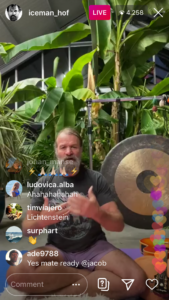
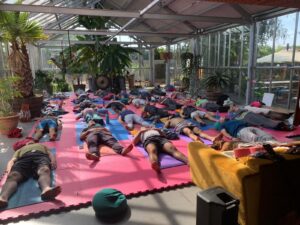
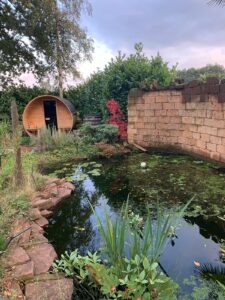
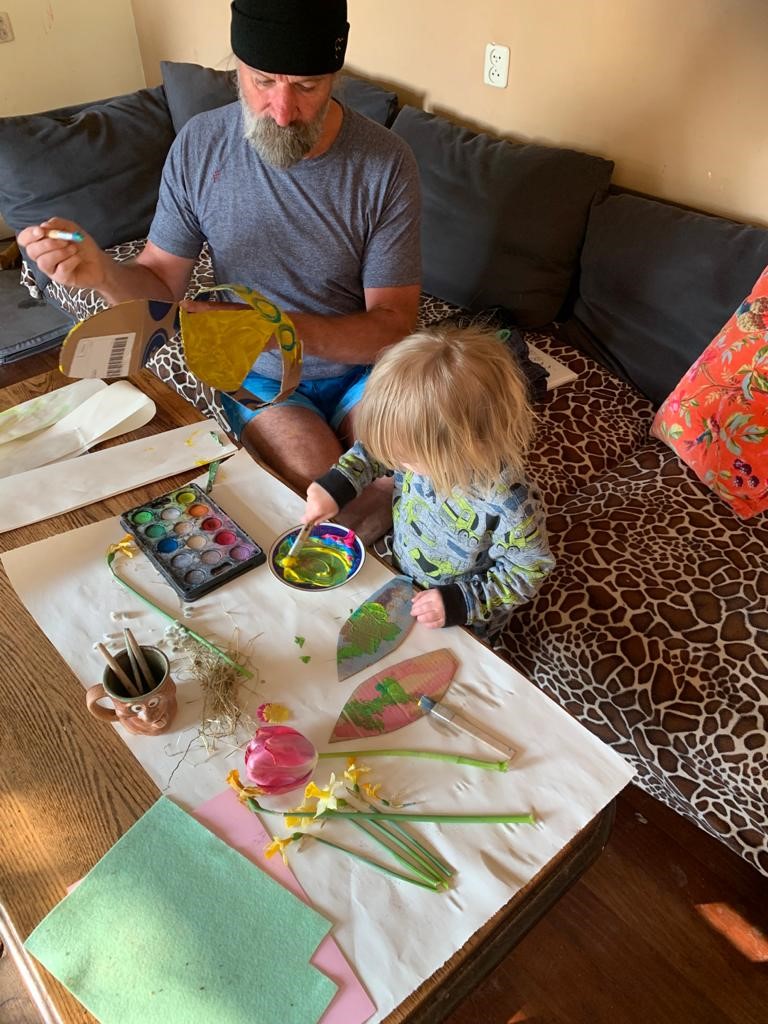
I am very hungry to learn more and go deeper. I spend my days spreading the message as wide as I can. I love my garden, coffee, and my kids—so much richness in my life.
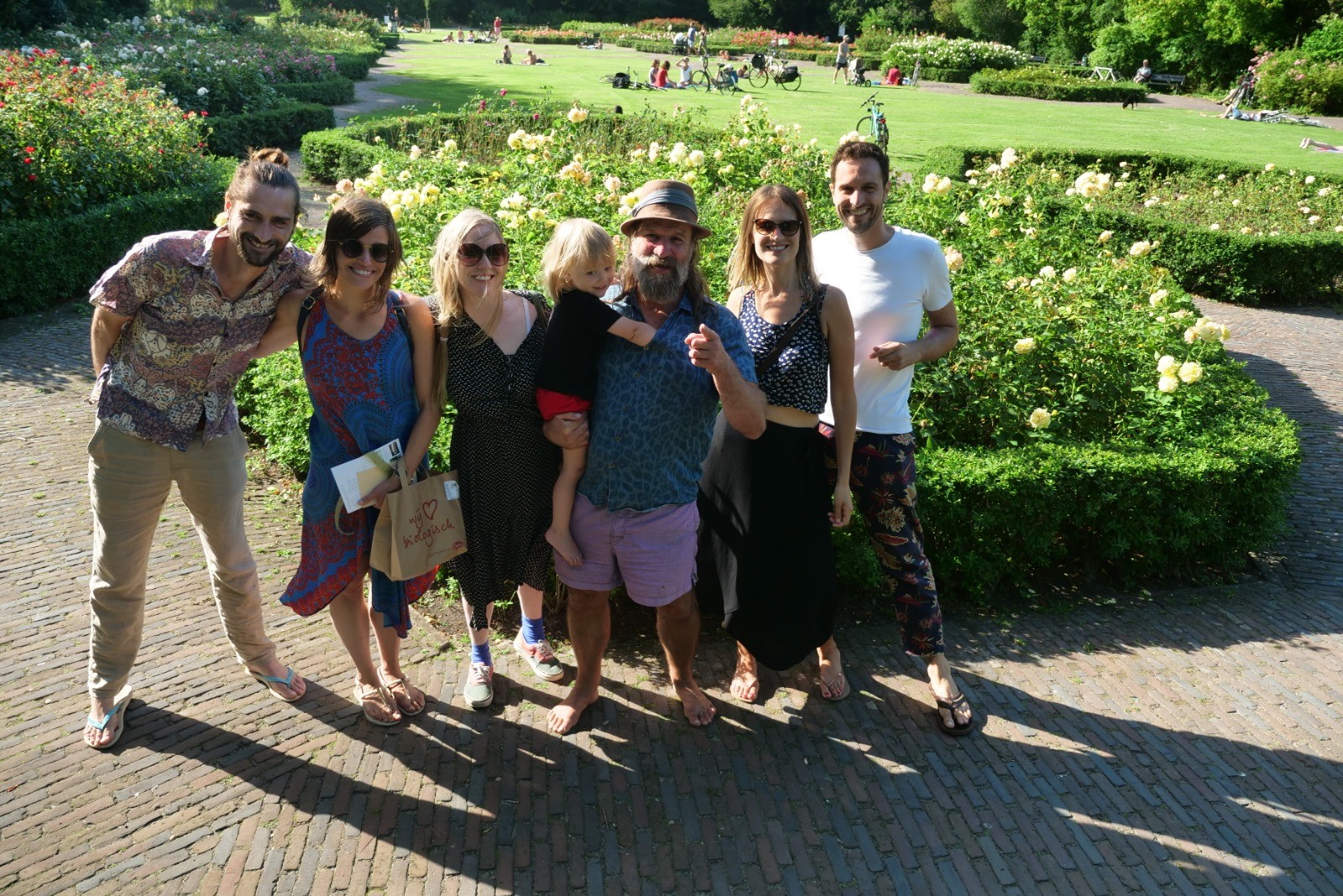
So, I see my everyday routine as a new opportunity to experience full gratitude. I am alive!
Has your book taken on a new meaning in the world’s current circumstances? Is there anything you would have included in your book if you were writing it now?
This book is needed more than ever. We need to not only strengthen our immune systems but to acknowledge that we are capable of dealing with the influx of information by reconnecting with our inner knowing—our core being. Anxiety and stress alike, we are able to create a new foundation for health, happiness, and strength in these challenging times. It’s a great gift to yourself to read this book.
Share a photo of you and your pet. Did your pet have a role in helping you write your book?
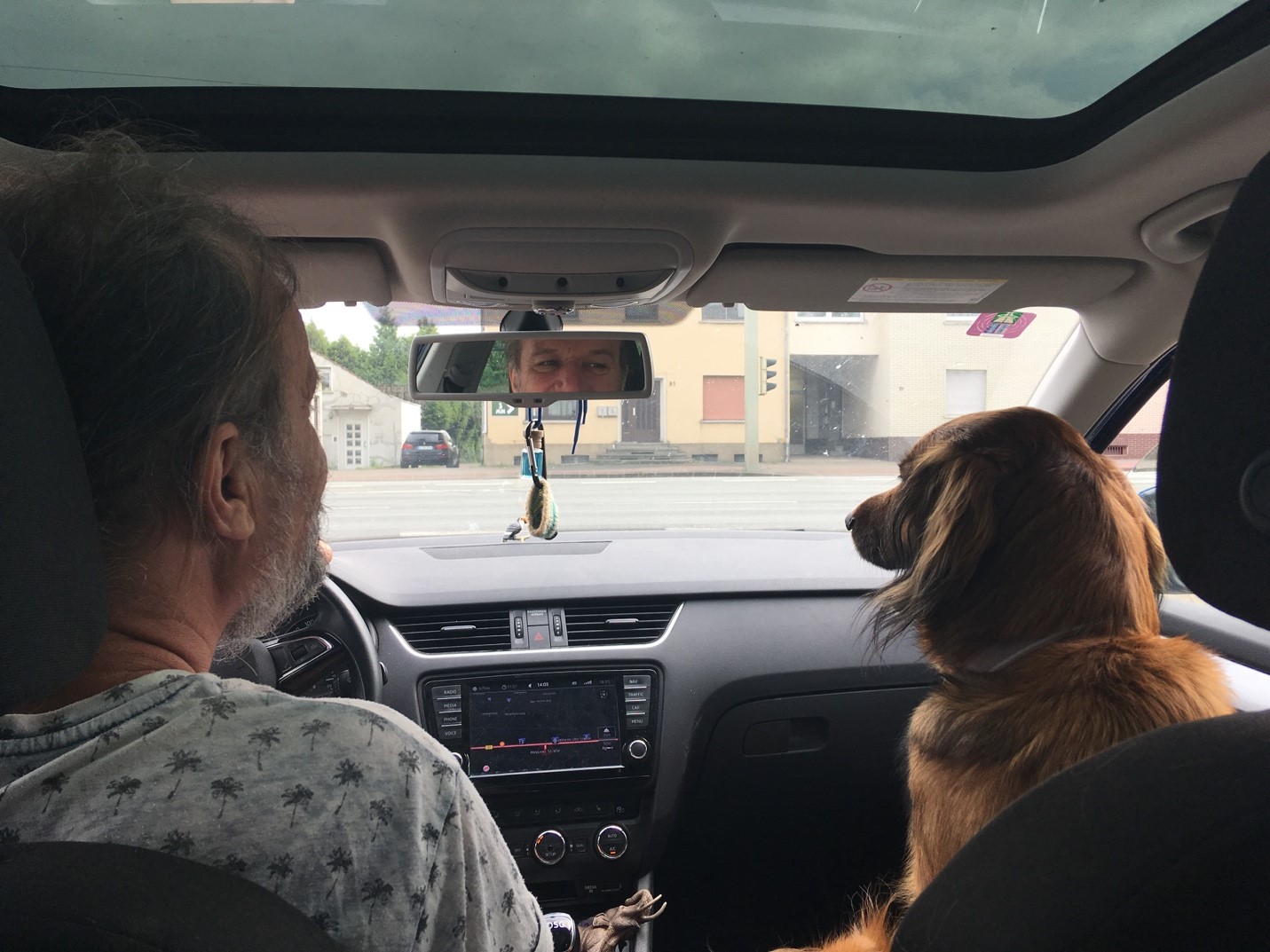
Zina is my guru, she is my brown shadow. She is so unconditionally loyal. She gives me beautiful light—we are true companions.

Learn More
Amazon | Barnes & Noble | Indiebound | Bookshop | Sounds True
Mindful Movement: Walking Meditation 101
The Here and Now
What if you could change your life by doing one thing for just ten seconds each day? What if this thing would make you more contented, more grounded, and less stressed?
Welcome to mindfulness.
We spend almost all of our time worrying about two things: what has already happened (the past) and what hasn’t happened yet (the future). This only makes us miserable. The past is over, so there’s nothing we can do about it. And the future isn’t something we should be thinking about right now—unless we’re taking concrete action toward a goal.
Mindfulness breaks us out of this pattern by turning our awareness to the simple moments of life as they happen. We laser in on our senses as we’re experiencing them, and we feel them deeply.
So, the way to “be deep” is to focus on what’s going on right now.
I have two favorite ways to zap into the present moment.
The first way is to briefly tune in to my breath a few times a day. Set an alarm on your watch or phone to go off at three set times during the day. When it goes off, close your eyes and take three deep breaths. Notice how the breath feels as it flows in and out. Let go of whatever else is going on in your mind. Then open your eyes and go back to your day.
The second way is to tune in to the little details of the day. Say you’re picking up a water bottle. Consider this: How does the bottle feel in your hand? Is it heavy or light? When you take a sip of the water, how does it feel on your tongue? Is it cool or warm? What does it taste like? Try this exercise with one small act each day.
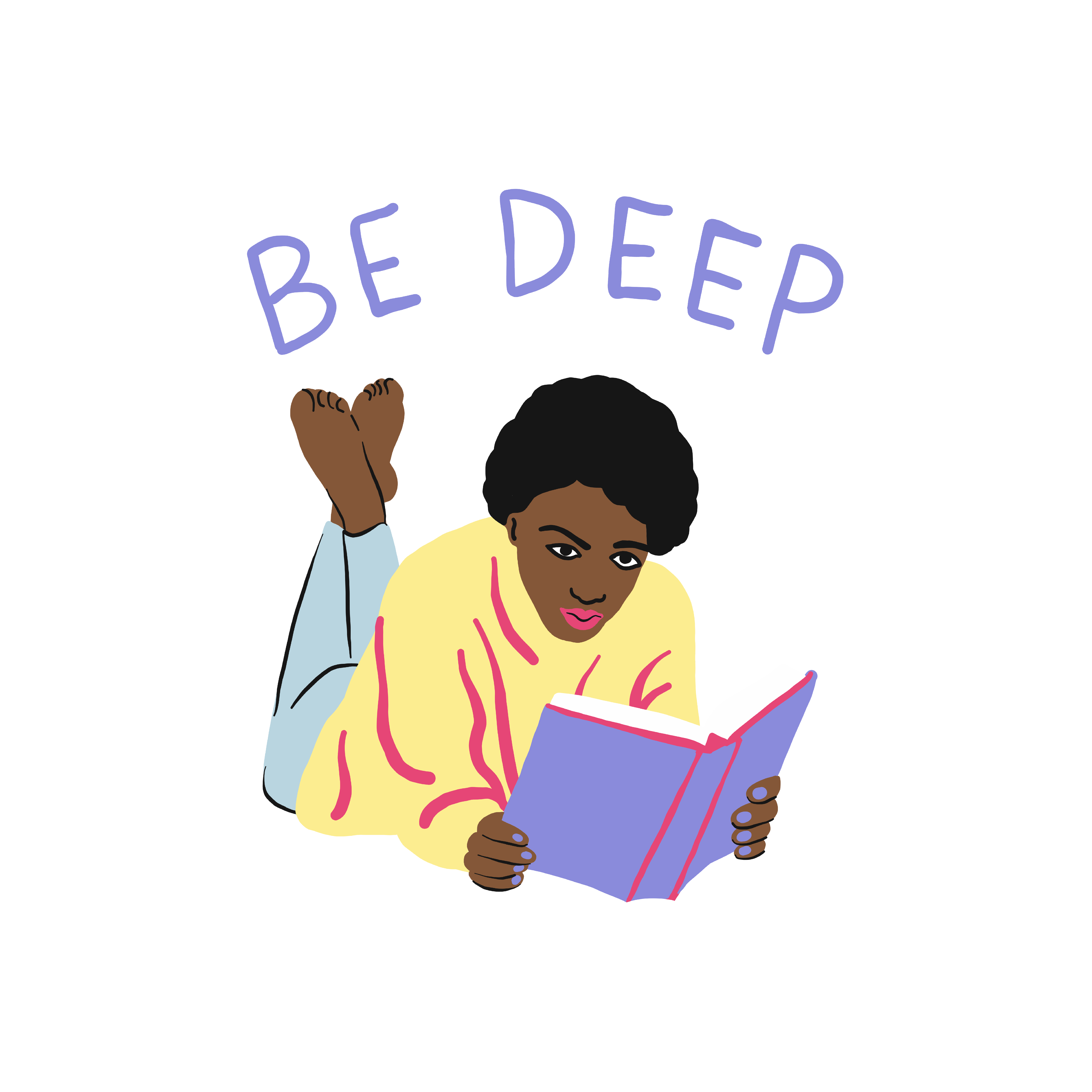 MINDFUL MOVEMENT: Walking Meditation
MINDFUL MOVEMENT: Walking Meditation
Walking meditation is a great way to de-stress and get centered while moving your body and getting some fresh air. It takes only a few minutes, so you can do it almost anywhere.
- The next time you’re walking down the street, start by getting your senses alert. Tune in to the pace of your steps and fall into the rhythm of the steps. What do they sound like?
- Turn your attention to an object you see as you’re walking. It might be a sign, a tree, or a building. Look intently at that object and observe it without labeling it. Just notice it.
- Now turn your attention to the noises that surround you. Don’t label them. Just listen.
- Finally, turn your attention to your breathing. Is it fast and shallow or slow and deep? Take a few deep breaths and continue with your steady pace.
- When you finish your walking meditation, take a minute and pause before reentering your day. Notice the way your body and mind feel. Carry that alertness and presence with you into the rest of your day
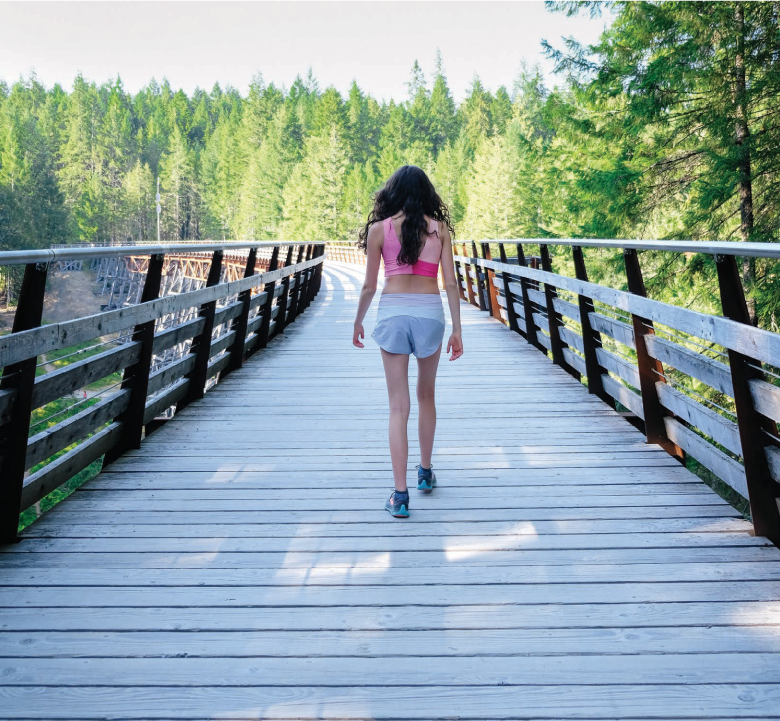
This is an excerpt from the chapter “Be Deep” from Whole Girl: Live Vibrantly, Love Your Entire Self, and Make Friends with Food by Sadie Radinsky.
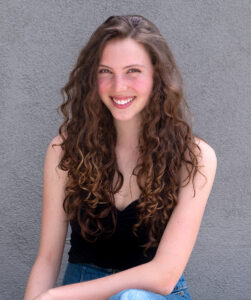 Sadie Radinsky is a 19-year-old blogger and recipe creator. For over six years, she has touched the lives of girls and women worldwide with her award-winning website, wholegirl.com, where she shares paleo treat recipes and advice for living an empowered life. She has published articles and recipes in national magazines and other platforms, including Paleo, Shape, Justine, mindbodygreen, and The Primal Kitchen Cookbook. She lives in the mountains of Los Angeles. For more, visit wholegirl.com.
Sadie Radinsky is a 19-year-old blogger and recipe creator. For over six years, she has touched the lives of girls and women worldwide with her award-winning website, wholegirl.com, where she shares paleo treat recipes and advice for living an empowered life. She has published articles and recipes in national magazines and other platforms, including Paleo, Shape, Justine, mindbodygreen, and The Primal Kitchen Cookbook. She lives in the mountains of Los Angeles. For more, visit wholegirl.com.
 Sounds True | Amazon | Barnes & Noble | Bookshop | Indiebound
Sounds True | Amazon | Barnes & Noble | Bookshop | Indiebound
A Path to Embodied Nonduality
We find ourselves in a time that is rich with paths toward spiritual awakening, especially that pinnacle of awakening called “nonduality.”
The Fullness of the Ground is my contribution to that abundance. It describes in detail the lived experience of nondual realization.
In the book, I offer a series of gentle attunement practices, called the Realization Process, for uncovering and knowing ourselves as a fundamental, undivided dimension of consciousness, pervading our whole body and environment. Pervading our body, fundamental consciousness is experienced as the authentic ground of our individual being. Pervading our body and environment, it is the basis of our oneness with everyone and everything around us. This means that we become whole as individuals at the same time as we transcend our individuality and experience unity with our surroundings.
As a longtime spiritual teacher and psychotherapist, I feel that there is not enough emphasis in some of the nonduality teachings about how this realization enriches our lives. I have been particularly concerned about teachings that encourage people to disconnect from themselves as individuals or to suppress their emotional responses to the world around them. In this book, I instead offer a path to nondual realization that is deeply embodied and that matures us as individuals, at the same time that it opens us to self–other oneness. Far from erasing us as individuals, nondual realization enhances our experience of our own unique existence. It deepens all of our human capacities, including our ability to feel, to think, and to enjoy our lives. It can help heal and enhance our relationships with other people by enabling us to experience deep contact with others without losing inward contact with ourselves.
Central to the method in this book is the important difference between being aware of the body and inhabiting the body. So I often begin with this simple exercise for experiencing this distinction:
Sit upright with your hands in your lap.
Take a moment to become aware of your hands. You may notice how warm or cold they are or how tense or relaxed they are. This is becoming aware of your hands.
Now enter into your hands. Experience yourself as present, living within your hands. This is inhabiting your hands.
You can go on to inhabiting different parts of your body and, finally, your body as a whole. See if you can feel present everywhere within your body, rather than aware of it from the outside.
In the Realization Process, we go through several steps, taking around 30 minutes, to reach this next part. But, for a very shortened version, if you can feel that you are living within your body, then next find the space outside of your body, the space in your environment.
Let yourself experience that the space inside and outside of your body is the same undivided space. Without leaving your body, experience that the space that pervades your body also pervades your whole environment. This is the spacious expanse of fundamental consciousness.
Judith Blackstone, PhD
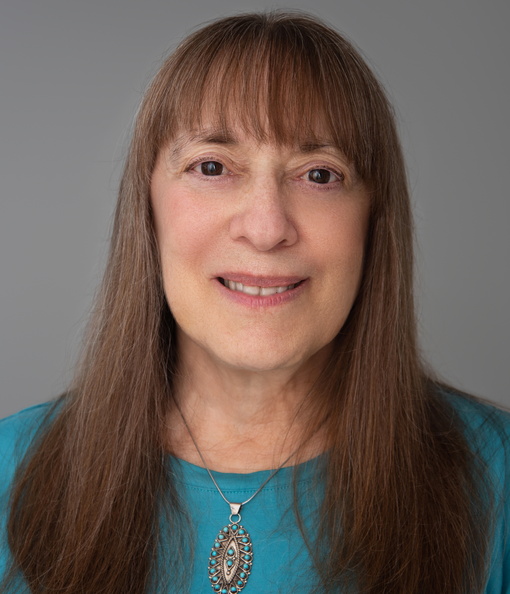
Judith Blackstone, PhD, is a psychotherapist and innovative teacher in contemporary spirituality. She developed the Realization Process®, an embodied approach to personal and relational healing and nondual realization. She is the author of Trauma and the Unbound Body, Belonging Here, The Intimate Life, The Enlightenment Process, and The Empathic Ground.
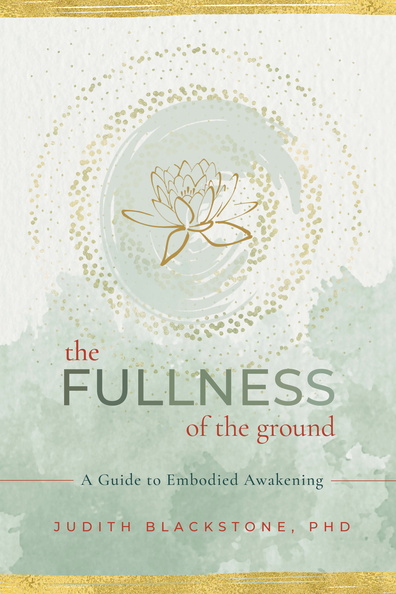
The Place You Awaken
Establishing a place for regular outdoor meditation and nature observation is often referred to as a “sit spot” or “medicine spot”. Like the Buddha, who found his own tree of awakening, we too can go to nature and practice being awake to the reality of the present moment. This practice can also help us become more intimate with all the qualities of the land we live with.
“If one day I see a small bird and recognize it, a thin thread will form between me and that bird. If I just see it but don’t really recognize it, there is no thin thread. If I go out tomorrow and see and really recognize that same individual small bird again, the thread will thicken and strengthen just a little. Every time I see and recognize that bird, the thread strengthens. Eventually it will grow into a string, then a cord, and finally a rope. This is what it means to be a Bushman. We make ropes with all aspects of the creation in this way.”
San bushman
Guided Sit Spot Practice
- Go to a place in nature that is close to where you live and that you can visit regularly.
- Take a few moments to center yourself, breathing in and out, and arriving fully in the present moment.
- As you are ready begin to walk mindfully with an intention to find a spot that calls out to you, a place you can sit and deepen your relationship with this place. The spot should feel welcoming, safe and comfortable. It could be under a tree, beside a boulder or in an open space. Often, east facing spots can be nice for early morning sits.
- When you find a spot that feels good, in your own way, ask permission of that place and wait to see what comes to you. If you feel invited, sit. If not, keep looking.
- Once in your spot, sit comfortably and become as still as you can. Imagine that you are melting into the earth, becoming a part of the land. Sit for at least 15-30 minutes, noticing any movement, sounds, or other sensations and activities.
- Return often.
Find more practices for connecting to nature in Rewilding: Meditations, Practices, and Skills for Awakening in Nature by Micah Mortali.
Read Rewilding today!
Sounds True | Amazon | Barnes&Noble | Bookshop
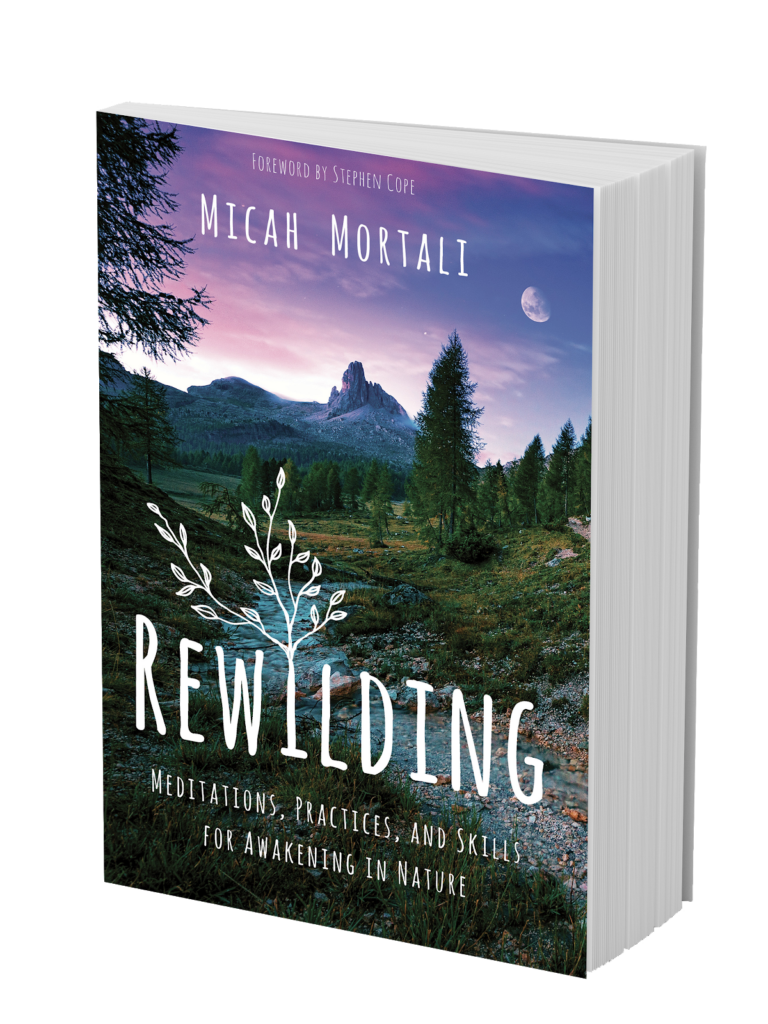
Mindfulness for Beginners with Jon Kabat-Zinn
An Invitation to the Practice of Mindfulness
Enjoy this sample recording from the acclaimed and inspiring new book and CD by Jon Kabat-Zinn entitled Mindfulness for Beginners. We may long for wholeness, suggests Jon, but the truth is that it is already here and already ours. The practice of mindfulness holds the possibility of not just a fleeting sense of contentment, but a true embracing of a deeper unity that envelops and permeates our lives. With Mindfulness for Beginners you are invited to learn how to transform your relationship to the way you think, feel, love, work, and play—and thereby awaken to and embody more completely who you really are.
Here, the teacher, scientist, and clinician who first demonstrated the benefits of mindfulness within mainstream Western medicine offers a book that you can use in three unique ways: as a collection of reflections and practices to be opened and explored at random; as an illuminating and engaging start-to-finish read; or as an unfolding “lesson-a-day” primer on mindfulness practice.

